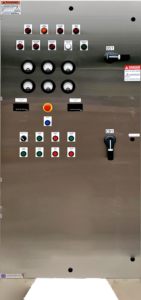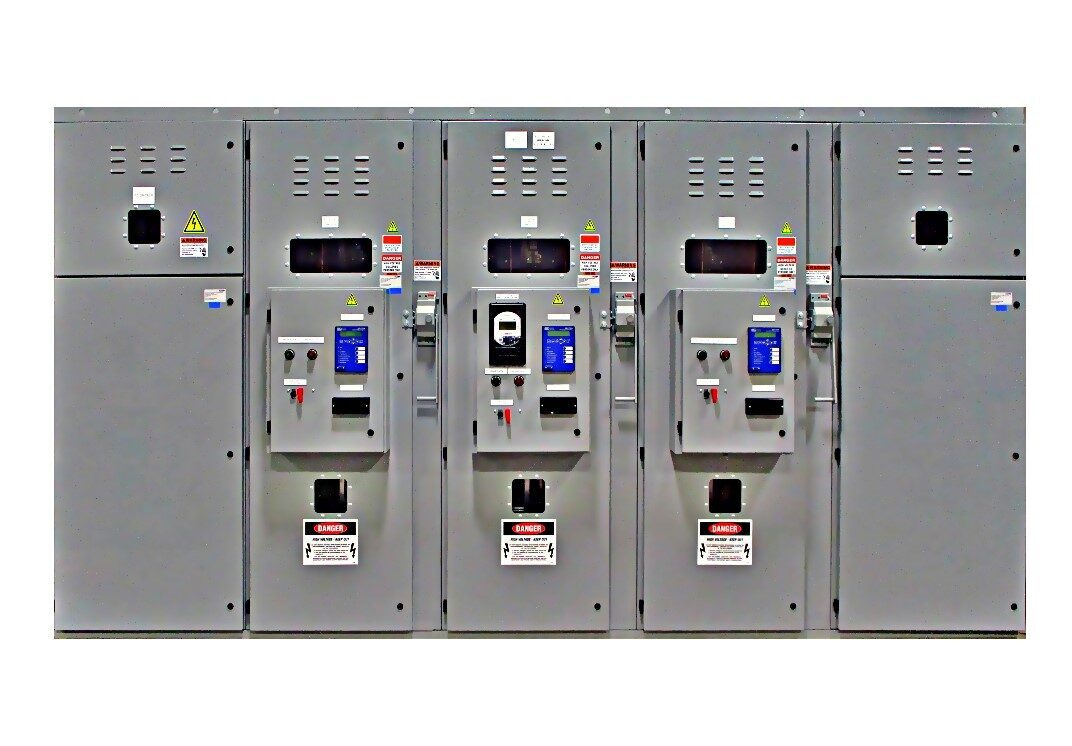PH: 780 485 9944 | FAX: 780 757 7274
Welcome to Solution Controls
About Us
Solution Controls has a reputation for providing excellent custom panels on short notice. We embody the following:
Fast.
We have been known for building custom panels within narrow timeframes.
Competitive.
We offer some of the best and most competitive rates for our panels.
Quality.
If we aren't satisfied, we aren't selling it. If you aren't satisfied, we are redoing it.
Products
Take a look at a mere sample of some of the panels that we offer.
Client Feedback
Hear what our happy clients have to say about Solution Control Systems.
FAQ's
Q1 - What is the control panel used for?
Control panels receive the electricity from the mains supply and distribute it to the different electrical systems such as lighting, pieces of machinery, and production lines within an industrial facility. The housing may contain the circuit breakers, meters, wiring, cables, relays, and other kinds of electrical equipment. It provides for the control of the flow of electricity to the various electrical equipment and systems, while also offering protection from hazardous conditions including overcurrent and overloading.
Q2 - What is the use of electrical control panel?
An electrical control panel has multiple uses. For instance, the control panels often possess 125% higher capacity than the Full Load Current (FLC) rating and of the industrial resistive loads. Therefore, apart from providing convenient and easy control of electric supply within a facility, the panels provide for reducing the threat of fire and accidents as they prevent electrical overloading and overcurrent. The control panels also have features to facilitate workmanship, earthing and grounding, and maintenance and are built to accommodate accessories for important tasks like drainage and ventilation as well.
Electrical control panels with particular features and ratings are also built for serving specialized purposes. For instance, an electrical control panel has features to remain efficient and operational even when it is submerged in water. In other instances, it may prevent the ingress of water and resist flammable substances, thereby preventing accidents in the more hazardous operational scenarios. The panels may also be designed for easy control of specific industrial equipment including VFDs (Variable Frequency Drives), pumps, and other mechanical and electrical equipment and systems.
Q3 - What are the different types of electrical panels?
The electrical panels house certain electronic components securely and also provide for affordable operational reliability. The panels are designed for applications in industries and therefore have different sizes and specifications. The popular and most sold varieties of electrical panels are listed below.
VFD Panels- With the increase in the use of VFDs (Variable Frequency Drives), the use of VFD panels has also increased. These panels house the VFD motor along with other components like electrical systems, circuit breakers, reactors, motor starters, and cooling units. These panels are usually used for controlling the large pieces of machinery. The VFD panels may also be created for particular applications. For instance, there are VFD panels including irrigation pump panels, electrical submersible panels, and progressive cavity pump panels, among others within the VFD panel category.
DG Synchronisation Panels- Industries that use the DG sets as generators for power backups may use the DG synchronization panels for controlling the DG set power supply. These panels provide for superior synchronization between the different electrical components and the motors.
Power Distribution Panels- The panel receives electricity generated from one source and distributes it to many different areas. The panels are used in the pharmaceutical, electrical, and other industries of both small and medium-size.
AMF Panels- The AMF or Automatic Mains Failure panels may be used in industries and areas where power failure is common. The panel provides for safe switching over to another power source, whenever a blackout occurs.
Panels may also be classified based on the enclosure types or the NEMA (National Electrical Manufacturer Association) rating they have. For instance, the NEMA 1 rated panels and enclosures that are used indoors protect electrical components against solid objects and also make the workplace safe for the personnel. The NEMA 3RX enclosures offer protection against dust as well as water ingress, and also provide some protection to the personnel for secure access to the hazardous parts. The NEMA ratings for enclosures include Type 1, 2, 3/3R/3S/3X/3RX/3SX, 4/4X, 5, 6/6P, 12/12K and 13. These different enclosures are built for specific operations environments.
Q4 - What are the types of control panel used in industries & all electrical purpose?
The load control center called a control panel may take various forms. There can be different types of control panels following their features and built, as per the NEMA rating and specifications. The panels may also be designed keeping in mind the machinery and applications, like the VFD panels. A single panel and electrical enclosure can serve a variety of purposes.
● The panel protects the inner electrical components and equipment from dust, water and other adverse and undesired elements of an industrial environment.
● The panel interiors are spacious and well labeled. They provide for easy operation and control of electrical systems and pieces of machinery and facilitate convenient maintenance of electrical panel.
● Panels may also have provisions for ventilation (in the form of fans and air conditioning) for preventing accidents in the high-heat operational scenarios.
● The control panels have the surge arrester that prevents damage to components and does not allow fire accidents in cases of over-current and overloading.
● Panels may also have the transformer to regulate the power supply to the different pieces of machinery, including the smaller power devices.
● Panels with PLC or Programmable Logic Unit provide for error-free and automated process control.
● Panels with HMI (Human Machine Interface) provide for convenient control of operations and better monitoring of the machinery.
Q5 - How does control panel work?
The control panels work and provide the benefits through the components they carry and built. For instance, the PLC gets inputs through sensors and uses the information for controlling outputs that can be alarms, valves, motors, drives and pumps among other equipment and pieces of machinery. HMI or Human Machine interface is the graphical visualization, monitoring, and control system, and makes it easy to control the supply of electricity to various systems. Apart from the PLCs, panels may also have other kinds of controllers.
The circuit breakers of the panels fail safely when there is a current surge, thereby protecting expensive equipment and also preventing accidents. The transformers may reduce or increase the voltage and make it suitable for the different systems that get electricity through the panel. Panels may avoid ingress of water, dust, and other hazards through gaskets and other built specifications, and may have the ventilation systems to lower the inner temperature, thereby protecting the components through additional measures.


